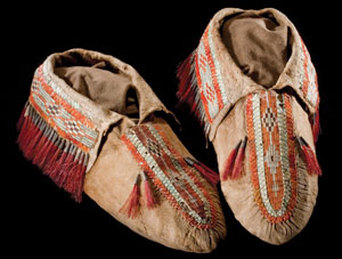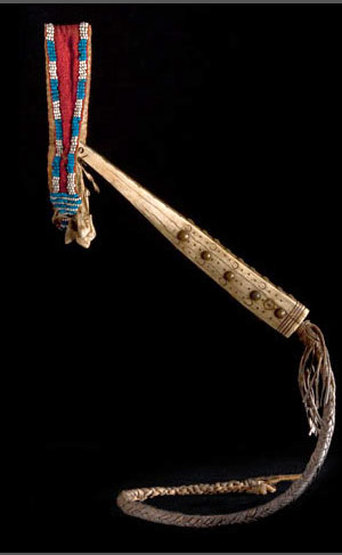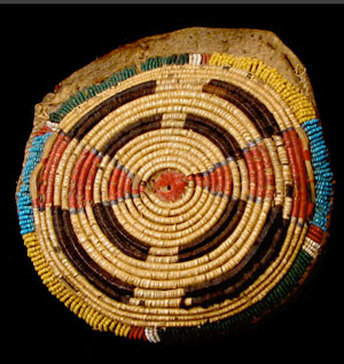PLAINS ART BEFORE 1860When Lewis and Clark explored the huge area that the U.S. had acquired from France, they sent back to Washington, D.C., many samples of flora, fauna and Native American art. Being a strict Federalist, Thomas Jefferson did not think that the federal government should be in the museum business. He therefore installed the Native objects in his front parlor, making the third President of this country the first collector of Native American Art. Among the object that hung in his parlor was a fully beaded cradle collected among the Crow. All of the beads are the large beads that we now call pony beads. Blue is the predominant color with some white. When Jefferson died, his estate was in debt and his material possessions, including this cradle, were sold from his front lawn. The cradle now resides in the Peabody Museum at Harvard University.
Why did the early Plains artists favor pony beads, most frequently only using two colors? Occasionally more colors were used as well as the smaller ‘seed’ beads. We know from excavations at Bent’s Fort, a Colorado trading center that was destroyed in 1849, that the smaller beads were available. Allen Chronister has suggested that there is an artistic timeline in effect with the use of the smaller seed beads supplementing the pony beads at first (see the Yankton Sioux pipebag here) and then completely replacing them. The use of more colors and more elaborate designs also follow this timeline. The pony bead era is a golden age in Plains Art; it existed prior to the massive post Civil war settlement of the West that forever changed the way of life on the Plains. As in all cultures, the artists, in their own way, in the way of all artists, reflected those changes. Is it too simplistic an observation to suggest as the settlement of the West became more and more a fact of life that the beadwork reflected this complexity? The six pony bead decorated objects in this exhibition come from a time before the tourist trade, before the West was ‘won’, before the hegemony of the U.S. It was also a time before photography, yet also the time when the image of the American Indian became fixed in the imagination of the world through the paintings of Karl Bodmer and George Catlin. These objects give testimony to that era. John Molloy |



